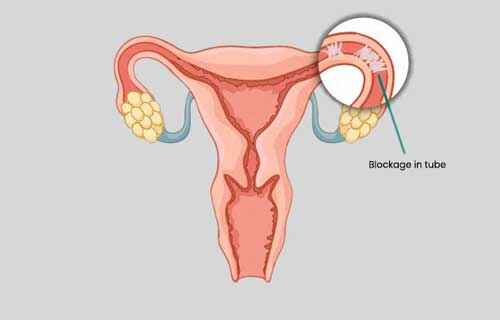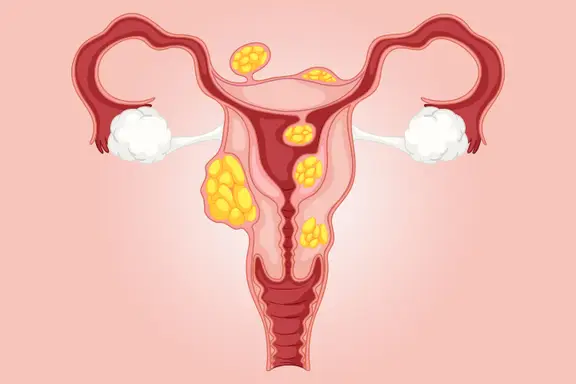Introduction

In vitro fertilization (IVF) is a powerful and often life-changing option for couples struggling with infertility. However, the journey can be physically demanding and emotionally exhausting. With the uncertainty of the outcome and the intensity of medical treatments, many couples find the IVF process overwhelming. Amidst these challenges, a growing number of people are turning to holistic practices like yoga to complement their fertility treatments.
Yoga, known for its physical, mental, and emotional benefits, has been increasingly recognized for its supportive role in IVF. Yoga for IVF Not only can help improve physical health, but it can also aid in managing the emotional and psychological stresses associated with fertility treatment. In this guide, we’ll explore how yoga can enhance IVF success and improve overall well-being during the process.
Common Reasons for IVF Treatment: Addressing Infertility Challenges
Fibroids and Fertility: Fibroids are non-cancerous growths in the uterus that can disrupt the reproductive process by interfering with embryo implantation. Depending on their size and location, they may cause difficulties in conceiving naturally, leading many couples to consider IVF as a solution to bypass this issue.
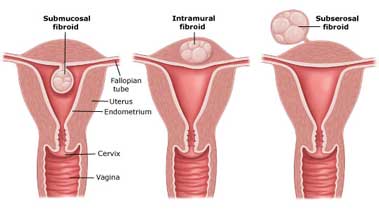
Endometriosis and IVF: Endometriosis is a condition where tissue similar to the uterine lining grows outside the uterus, often causing inflammation, scarring, and pain. This abnormal growth can negatively affect the reproductive organs, making natural conception difficult. IVF allows fertilization to occur outside the body, improving the chances of a successful pregnancy for those affected by endometriosis.
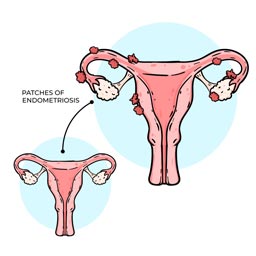
Blocked Fallopian Tubes: Blocked Fallopian Tubes, are Blockages in the fallopian tubes that can occur due to infections, scarring, or pelvic inflammatory disease, preventing eggs from reaching the uterus. In such cases, IVF can bypass the fallopian tubes entirely, offering a direct route for fertilization and embryo implantation.
Unexplained Infertility: In cases of Unexplained Infertility, where no specific cause is identified, conditions like these may still be present, hindering conception. IVF becomes a vital option for couples who face these challenges but are unable to pinpoint the exact reason for their infertility.

The Role of Yoga for IVF in the Treatment
Yoga and Physical Well-being

The emotional journey through IVF can be incredibly draining, marked by fluctuating highs and lows often accompanied by anxiety, stress, and uncertainty. Yoga provides valuable support by fostering mindfulness and emotional resilience, which are crucial during such a challenging period. By incorporating regular yoga practice, individuals can cultivate a sense of calm and presence, helping them navigate each stage of the IVF process with greater ease and mental clarity.
Mindfulness is a core benefit of yoga, encouraging individuals to stay grounded and fully engaged in the present moment. This practice helps reduce feelings of overwhelm and anxiety by promoting a steady, focused mind. Breathing exercises, or Pranayama, combined with gentle stretches, play a significant role in stress relief. These techniques help lower cortisol levels, which is essential for managing stress effectively—an important factor since stress can adversely affect fertility and overall well-being.
Moreover, yoga contributes to emotional balance by promoting inner peace and mental clarity. This emotional stability creates a more supportive environment for healing and resilience, allowing individuals to approach their IVF journey with a more positive outlook. By integrating yoga into their routine, individuals can foster emotional strength and a healthier mindset, making the IVF experience more manageable and less daunting.
Yoga and Hormonal Balance

Hormonal imbalances are a significant challenge for individuals undergoing IVF. Yoga, particularly restorative and gentle practices, is believed to help regulate hormones by reducing stress and promoting deep relaxation. This, in turn, supports overall reproductive health.
Poses such as Supta Baddha Konasana (Reclining Bound Angle Pose) and Viparita Karani (Legs Up the Wall Pose) stimulate the endocrine system, helping balance key reproductive hormones like estrogen and progesterone. Maintaining this hormonal equilibrium is vital for producing healthy eggs and increasing the likelihood of successful embryo implantation, making yoga a valuable tool during the IVF process.
Yoga and Emotional Health
The emotional toll of IVF can be overwhelming, filled with stress, anxiety, and uncertainty. Yoga offers powerful tools to help navigate these emotional ups and downs, fostering mindfulness, relaxation, and emotional resilience during such a challenging time. Practicing yoga regularly helps individuals stay grounded and focused, encouraging mindfulness and a calm presence through each stage of the IVF process.
Breathing exercises, or Pranayama, combined with gentle stretches, are particularly effective in reducing cortisol levels, helping manage stress—an essential factor, as stress can negatively impact fertility. Additionally, yoga promotes emotional balance by enhancing mental clarity and inner peace, creating space for emotional healing. This sense of calm and resilience can lead to a more positive and supportive mindset, making the IVF journey feel less daunting and more manageable.
Benefits of Yoga for IVF During Treatment
Improving Blood Circulation by Yoga for IVF

Proper circulation is crucial for reproductive health and fertility. Yoga plays a key role in improving blood flow to the reproductive organs, which is essential for nourishing the ovaries and uterus with oxygen-rich blood. This flow of oxygen is vital for ensuring optimal egg development and creating a receptive environment for embryo implantation. When circulation to these areas is enhanced, it can promote overall reproductive health, which is particularly beneficial for those undergoing IVF treatments.
Poses like Viparita Karani (Legs Up the Wall Pose) and Setu Bandha Sarvangasana (Bridge Pose) are especially effective in boosting circulation to the pelvic region. By encouraging blood flow to the reproductive organs, these poses can increase the chances of IVF success, as they help create favorable conditions for fertilization and implantation.
Enhancing Pelvic Health by Yoga for IVF
The pelvic region is vital for fertility, and yoga offers poses that specifically target and strengthen the pelvic floor muscles, promoting overall pelvic health and supporting the reproductive organs. A strong pelvic floor is essential in providing better support for the uterus, which can be beneficial during IVF treatments.
Poses such as Setu Bandha Sarvangasana (Bridge Pose) and Malasana (Garland Pose) are particularly effective in engaging the pelvic muscles, enhancing their strength and stability. Additionally, improving blood circulation to the pelvic area through these yoga poses can help nourish the reproductive organs. This increased blood flow contributes to a healthier uterine lining, creating a more favorable environment for embryo implantation and boosting the chances of IVF success.
Boosting the Immune System by Yoga for IVF
Maintaining a healthy immune system is crucial during IVF, as it directly impacts how the body responds to fertility treatments and the chances of achieving a successful pregnancy. Yoga can play a significant role in strengthening the immune system by reducing stress levels and lowering inflammation, both of which can weaken immune function if not properly managed. Through relaxation and mindful movement, yoga helps the body stay resilient during the physically and emotionally demanding IVF process.

Breathing exercises, such as Ujjayi Pranayama (Victorious Breath), are especially beneficial for boosting the immune response. These exercises promote deep, controlled breathing, which enhances overall well-being and supports a healthy immune system, aiding the body throughout the IVF journey.
Increasing Flexibility and Strength by Yoga for IVF
Flexibility and strength are essential physical attributes that can help make the IVF process more manageable. Regular yoga practice enhances muscle tone and flexibility, particularly in key areas like the hips, lower back, and pelvic region, which are often impacted during fertility treatments. Improving flexibility and building strength in these regions can help the body adapt better to the physical demands of IVF procedures, reducing discomfort and promoting overall well-being.

Yoga poses such as Padahastasana (Hand Under Foot Pose) and Uttana Shishosana (Extended Puppy Pose) specifically target the spine and shoulders, increasing flexibility. Meanwhile, Bhujangasana (Cobra Pose) strengthens the lower back and abdominal muscles, making the body more resilient and better prepared for the physical challenges associated with IVF.
Essential Poses of Yoga for IVF Success
The following yoga poses are highly recommended for supporting the IVF process:
Uttana Shishosana (Extended Puppy Pose) in Yoga for IVF
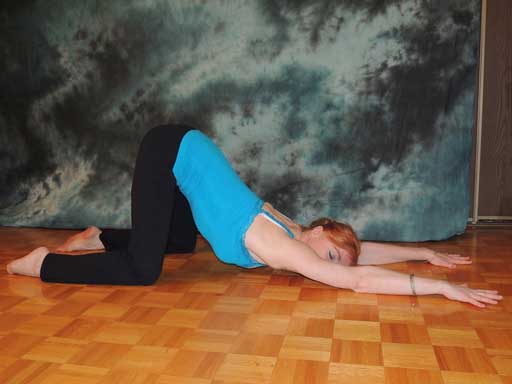
Description and Process: Uttana Shishosana, or Extended Puppy Pose, involves starting on all fours, then walking your hands forward while lowering your chest and forehead towards the ground. Keep your hips high and your arms extended in front of you. Hold the pose for several breaths, focusing on elongating the spine and stretching the shoulders.
Benefits for IVF: This pose is highly beneficial for individuals undergoing IVF as it stretches the spine and shoulders, which helps to relieve tension and promote relaxation. By reducing stress and physical discomfort, Extended Puppy Pose can help create a more supportive environment for fertility treatments and overall well-being.
Viparita Karani (Legs Up the Wall Pose) in Yoga for IVF
Description and Process: Viparita Karani, or Legs Up the Wall Pose, involves lying on your back with your legs extended up against a wall. Position your hips close to the wall and your arms relaxed by your sides. Hold the pose for several minutes, focusing on deep, steady breathing.

Benefits for IVF: This restorative pose enhances blood circulation to the pelvic area, which is crucial for nourishing reproductive organs and supporting a healthy uterine lining. Additionally, it reduces fatigue and helps balance the nervous system, fostering relaxation. This combination of benefits supports a more favorable environment for IVF treatments and overall fertility.
Supta Baddha Konasana (Reclining Bound Angle Pose)
Description and Process: Supta Baddha Konasana, or Reclining Bound Angle Pose, involves lying on your back with your feet together and knees splayed out to the sides. Place your hands on your belly or by your sides. Use props like cushions or blankets under your knees for additional support, and hold the pose for several minutes, focusing on deep breathing.

Benefits for IVF: This pose opens the hips and improves blood flow to the pelvic region, which is beneficial for nourishing reproductive organs and easing tension. By promoting relaxation and relieving stress, Reclining Bound Angle Pose helps create a more balanced and supportive environment for fertility treatments and overall well-being.
Padahastasana (Hand Under Foot Pose) in Yoga for IVF
Description and Process: Padahastasana, or Hand Under Foot Pose, involves standing with your feet hip-width apart and bending forward from the hips. Slide your hands under your feet, and gently press your palms against the soles. Hold the pose for several breaths, focusing on elongating the spine and stretching the hamstrings.

Benefits for IVF: This pose stretches the hamstrings and improves flexibility, which can alleviate physical tension and enhance overall comfort during IVF. Additionally, by calming the nervous system, Hand Under Foot Pose supports emotional well-being, contributing to a more relaxed and balanced state, which is beneficial for fertility treatments.
Bhujangasana (Cobra Pose) in Yoga for IVF
Description and Process: Bhujangasana, or Cobra Pose, begins with lying on your stomach, placing your hands under your shoulders, and pressing your elbows close to your body. As you inhale, lift your chest and head off the ground, keeping your lower ribs and pelvis in contact with the floor. Hold the pose for several breaths, focusing on opening the chest and stretching the abdomen.

Benefits for IVF: Cobra Pose strengthens the lower back and stimulates the reproductive organs, which can support overall fertility. By enhancing blood flow to the pelvic region and improving core stability, this pose helps create a more favorable environment for reproductive health, which is beneficial during IVF treatments.
Setu Bandha Sarvangasana (Bridge Pose)
Description and Process: Setu Bandha Sarvangasana, or Bridge Pose, starts by lying on your back with your knees bent and feet flat on the floor, hip-width apart. Press your feet into the ground and lift your hips toward the ceiling while clasping your hands under your back. Hold the pose for several breaths, focusing on lifting through the hips and engaging the core.
Benefits for IVF: Bridge Pose strengthens the pelvic floor muscles and enhances blood circulation to the pelvic area, which is crucial for a healthy reproductive environment. By improving blood flow and supporting pelvic stability, this pose helps create an optimal setting for embryo implantation and contributes positively to overall fertility during IVF treatments.
Malasana (Garland Pose) in Yoga for IVF
Description and Process: Malasana, or Garland Pose, begins by standing with your feet slightly wider than hip-width apart. Bend your knees deeply and lower your hips toward the ground, keeping your back straight. Place your hands in a prayer position at your chest or extend them forward for balance. Hold the pose for several breaths, focusing on opening the hips and maintaining a steady breath.

Benefits for IVF: Garland Pose opens the hips and promotes healthy blood flow to the reproductive organs, which is essential during fertility treatments. By enhancing circulation and providing support to the pelvic area, this pose helps create a more favorable environment for reproductive health and contributes positively to the success of IVF treatments.
Marjaryasana/Bitilasana (Cat/Cow Pose) in Yoga for IVF
Description and Process: Marjaryasana/Bitilasana, or Cat/Cow Pose, starts on all fours with your wrists under your shoulders and knees under your hips. Inhale to arch your back and lift your head and tailbone (Cow Pose), then exhale to round your spine and tuck your chin to your chest (Cat Pose). Continue to flow between these two positions for several breaths, focusing on the movement of the spine.

Benefits for IVF: Cat/Cow Pose enhances spinal flexibility and relieves lower back tension, which can be beneficial during IVF treatments. By improving the mobility of the spine and easing back discomfort, this pose helps support overall physical comfort and readiness for the demands of fertility procedures.
Mandukasana (Frog Pose) in Yoga for IVF
Description and Process: Mandukasana, or Frog Pose, involves starting on all fours and then spreading your knees wide while keeping your feet together. Lower your hips towards the floor and lean forward, placing your forearms on the ground for support. Hold the pose for several breaths, focusing on deepening the stretch in the hips and groin.

Benefits for IVF: Frog Pose stimulates the reproductive organs and increases flexibility in the hips and groin area. By enhancing circulation and promoting overall pelvic health, this pose supports a more favorable environment for fertility and can aid in the overall success of IVF treatments.
When to Practice Yoga for IVF
Before Injections/Ovarian Stimulation
Before starting injections and ovarian stimulation in IVF, gentle yoga practices can help prepare both body and mind. Poses such as Supta Baddha Konasana (Reclining Bound Angle Pose) and Uttana Shishosana (Extended Puppy Pose) are particularly useful. They promote relaxation, open the hips, and reduce tension, creating a calming effect.
These early yoga practices not only enhance physical comfort but also support emotional well-being. By fostering mindfulness and reducing stress, these poses help create a balanced and centered state. This preparation can positively influence the IVF process, setting a supportive foundation for the journey ahead.
During Injections/Ovarian Stimulation
During ovarian stimulation, it’s important to avoid yoga poses that put pressure on the abdomen or restrict blood flow. Instead, moderate-intensity yoga that emphasizes relaxation and gentle stretching is ideal. Poses such as Viparita Karani (Legs Up the Wall Pose) and Setu Bandha Sarvangasana (Bridge Pose) are safe and supportive during this phase.
These poses help enhance circulation and promote relaxation without straining the body. Viparita Karani improves blood flow to the pelvic area, while Setu Bandha Sarvangasana strengthens the pelvic floor and supports overall comfort. Integrating these gentle practices can help maintain balance and well-being throughout the ovarian stimulation process.
After Embryo Transfer
Post-transfer, it’s crucial to focus on calming both the mind and body. Restorative yoga, meditation, and breathing exercises can be particularly beneficial during this critical phase. These practices help to foster relaxation and manage anxiety, providing the support needed as you await the outcome of the IVF process.
Restorative yoga helps to gently stretch and relax the body without strain, while meditation and breathing exercises promote mental clarity and calm. By integrating these techniques, you can create a serene and balanced environment that supports emotional well-being and helps manage the stress associated with the post-transfer period.
During Pregnancy
If pregnancy occurs following IVF, it’s important to continue practicing yoga with care. Prenatal yoga is tailored to support a healthy pregnancy by focusing on gentle stretching, pelvic floor strengthening, and relaxation. These practices help maintain physical comfort and flexibility while also preparing the body for the changes of pregnancy.
Gentle stretching in prenatal yoga promotes physical well-being, while strengthening the pelvic floor supports the growing uterus and helps prepare for labor. Additionally, relaxation techniques are crucial for managing stress and promoting overall calm. Continuing with safe, targeted yoga practices can enhance your comfort and well-being throughout your pregnancy journey.
Integrating Yoga for IVF into Everyday Life
Daily Practice
Incorporating yoga into a daily routine, even for just 10-15 minutes, can significantly help manage the stress and physical demands of IVF. Gentle stretching, breathing exercises, and relaxation techniques are effective in reducing anxiety and promoting overall well-being.
Regular practice of these yoga elements supports physical comfort by alleviating tension and enhancing flexibility. Breathing exercises and relaxation techniques also contribute to a more balanced emotional state. By dedicating a small amount of time each day to yoga, you can create a supportive environment that enhances
your resilience and prepares you better for the challenges of IVF.
Mindful Breathing
Mindful breathing exercises, like deep diaphragmatic breathing and Ujjayi Pranayama, can be highly effective in maintaining focus and calm throughout the day. Deep diaphragmatic breathing involves inhaling deeply through the nose, allowing the abdomen to expand, and then exhaling slowly through the mouth, which helps activate the body’s relaxation response and reduces stress.
Ujjayi Pranayama, or Victorious Breath, involves breathing in and out through the nose while slightly constricting the throat, creating a gentle ocean-like sound. This technique not only enhances concentration but also promotes a sense of tranquility. Regular practice of these breathing exercises supports overall well-being by reducing stress and fostering mental clarity.
Creating a Routine
Establishing a consistent yoga routine, whether in the morning or evening, helps create a sense of stability and control amid the unpredictability of IVF treatment. By incorporating yoga into your daily life, you build a reliable structure that supports both physical and emotional well-being.
A regular practice promotes physical resilience through improved flexibility, strength, and relaxation, while also enhancing emotional resilience by reducing stress and fostering a calm mindset. This stability can be particularly valuable during IVF, offering a grounding effect that helps manage the challenges and uncertainties of the
treatment process.
Adapting Yoga to Lifestyle
Whether you prefer practicing yoga at home, attending a local studio, or participating in virtual classes, yoga can be adapted to fit your schedule. The key to its effectiveness during IVF is consistency. Even a short daily session can make a significant impact on both physical and emotional well-being.
By integrating yoga into your routine regularly, you can benefit from enhanced flexibility, strength, and relaxation. Consistent practice also helps manage stress and fosters mental clarity. Regardless of the setting, making yoga a daily habit provides a supportive foundation, helping to create stability and resilience throughout the IVF process.
Combining with Other Wellness Practices
Yoga complements other wellness practices such as balanced nutrition, sufficient sleep, and mindfulness meditation. Integrating these practices together can significantly enhance overall health and support the IVF process.
Balanced nutrition provides the body with essential nutrients, while sufficient sleep helps in recovery and hormone regulation. Mindfulness meditation fosters emotional balance and reduces stress. When combined with regular yoga practice, these elements create a holistic approach that can improve both physical and emotional well-being, potentially increasing the chances of IVF success.
Conclusion
Yoga works exceptionally well alongside other wellness practices, such as balanced nutrition, sufficient sleep, and mindfulness meditation. When integrated into a daily routine, these practices collectively enhance overall health and well-being. Balanced nutrition provides essential vitamins and minerals, supporting reproductive health and overall vitality.
Sufficient sleep is crucial for hormone regulation and physical recovery, which positively impacts IVF success. Mindfulness meditation helps maintain emotional stability and reduce stress, both of which are vital during the IVF process. Incorporating these practices with regular yoga fosters a comprehensive approach to health.
Combining yoga, proper nutrition, adequate rest, and mindfulness creates a supportive environment that improves overall health and potentially increases the chances of successful IVF treatment. This holistic approach addresses both physical and emotional needs, contributing to a more resilient and balanced state throughout the IVF journey.

